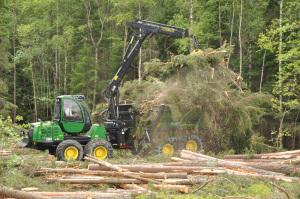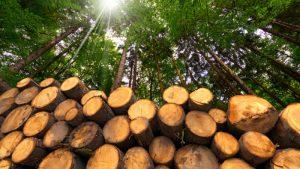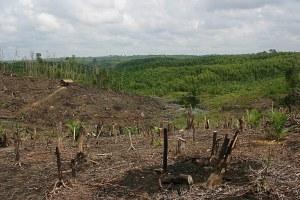 While some complain that the European Union (EU) is an enormous, cumbersome beast (just ask the self-harming Brexiteers), it generally has some rather laudable legislative checks and balances for nature conservation. While far from perfect, the rules applying to all Member States have arguably improved the state of both European environments, and those from which Europeans source their materials.
While some complain that the European Union (EU) is an enormous, cumbersome beast (just ask the self-harming Brexiteers), it generally has some rather laudable legislative checks and balances for nature conservation. While far from perfect, the rules applying to all Member States have arguably improved the state of both European environments, and those from which Europeans source their materials.
But legislation gets updated from time to time, and not always in the ways that benefit biodiversity (and therefore, us) the most. This is exactly what’s just happened with the new EU Renewable Energy Directive (RED) released in June this year.
Now, this is the point where most readers’ eyes glaze over. EU policy discussions are exceedingly dry and boring (I’ve dabbled a bit in this arena before, and struggled to stay awake myself). But I’ll try to lighten your required concentration load somewhat by being as brief and explanatory as possible, but please stay with me — this shit is important.
In fact, it’s so important that I joined forces with some German colleagues with particular expertise in greenhouse-gas accounting and EU policy — Klaus Hennenberg and Hannes Böttcher1 of Öko-Institut (Institute of Applied Ecology) in Darmstadt — to publish an article available today in Nature Ecology and Evolution.

But RED 2009 was far from what we might call ‘ambitious’, because globally mandatory criteria on water, soil and social aspects for agriculture and forestry production were excluded to avoid conflicts with rules of the World Trade Organization.
Nor did RED 2009 apply to all bioenergy types, and only included biofuels used in transport, including gaseous and solid fuels, and bioliquids used for electricity, heating, and cooling. But RED 2009 requirements also applied to all raw materials sourced from agriculture and forestry, especially as forest biomass is explicitly mentioned as a raw material for the production of advanced biofuels in the RED 2009 extension from 2015.
Thus, one could conceivably call RED 2009 criteria ‘minimum safeguards’.
But as of June this year, the EU accepted a 2016 proposal to recast RED 2009 into what is now called ‘RED II’. While the revisions might look good on paper by setting new incentives in transport (advanced biofuels) and in heating and cooling that will likely increase the use of biomass sourced from forests, and by extending the directive on solid and gaseous biomass, the amendments unfortunately take some huge leaps backwards in terms of sustainability requirements.
These include the following stuff-ups:
There is no longer any protection of primary and highly biodiverse forests from forestry exploitation. In RED 2009, land-use change criteria applied to agriculture and forestry. Their application is now removed for forestry in RED II. This means that forest biomass harvested in primary forests, in highly biodiverse secondary forests, and in forests on peatland can be sold as sustainable bioenergy complying with RED II in EU markets.

RED II only addresses parts of solid and gaseous bioenergy. Requirements for sustainable forestry will now apply only to installations burning solid biomass that are rated ≥ 20 MW (total rated thermal output). This means that about 75% of the wood energy currently used in the EU would not need to comply with any RED II sustainability requirements.
This threshold massively undermines the already weak sustainability requirements for forestry: forest biomass complying with RED II will likely be sold to larger plants and non-complying biomass to smaller plants. The situation is similar for biogas. Most European biogas plants have electrical outputs between 0.1 and 0.5 MW, with the minimum plant-output threshold set to 2 MW. Such large biogas plants require biomass inputs grown on more than 1000 ha. In contrast, raw material used for biofuels must — as is already stipulated under RED 2009 — comply with the RED criteria for each single hectare.
RED II has ineffective new Land Use, Land-Use Change and Forestry (LULUCF) criteria. Member States are henceforth allowed to consider imported biomass from forestry only from countries that (i) ratified the Paris Agreement, and (ii) account carbon-stock changes from biomass towards the country’s commitment to reduce or limit greenhouse-gas emissions or, in accordance with Article 5 of the Paris Agreement, conserve and enhance in the harvested area carbon stocks and sinks.
In principle, these criteria set carbon-stock safeguards that would still allow land-use change and associated negative impacts on biodiversity in forests. Furthermore, RED II offers an exemption clause; in instances where evidence on the LULUCF criteria is missing, management systems are mandated to ensure that forest carbon stocks and sinks are maintained or strengthened over the “long term” — an aspect already covered in the forest management criteria. Therefore, the LULUCF requirements are a toothless tiger and would not attenuate risks to biodiversity from harvest.
Highly biodiverse forests are not covered for forestry. The same problem applies to the new RED II criterion on protecting highly biodiverse forests associated with agricultural production. Protection against conversion of forests — including highly biodiverse forests — to agricultural land is already covered by the high-carbon stock criteria. Highly biodiverse forests should be protected against negative impacts arising from forestry, but this criterion is now missing.
RED II undermines the protection of highly biodiverse grasslands. RED 2009 differentiates “natural” and “non-natural highly biodiverse” grasslands, with the latter described as “grassland that would cease to be grassland in the absence of human intervention and which is species-rich and not degraded”. These criteria are purportedly defined based on sound scientific information by the Grassland Regulation. Under the RED 2009 grassland criteria, an area is deemed “non-natural highly biodiverse grassland” as long as the opposite has not been shown.
Now also a “competent authority” must identify a grassland area as “highly biodiverse” . However, even for countries that have relatively advanced legislation and enforcement for nature protection, not all highly biodiverse grasslands are identified consistently by a “competent authority”, nor are there strict definitions of what constitutes such an authority. The situation would be likely worse in countries with weak governance and poor track records in nature conservation.
Moreover, this additional criterion is not mentioned in the Grassland Regulation. In fact, approving this new RED II criterion would overrule the Grassland Regulation and reverse the former RED 2009 mitigation. As such, no grassland would be considered highly biodiverse as long as a “competent authority” did not deem it to be so. The Commission’s authorisation to draw up criteria determining which grasslands shall be covered as “highly biodiverse” is only a faint glimmer of hope for grassland protection.

If we had our way, we might recommend at least the following minimal changes to RED II that could save a lot of biodiversity misery.
First, we would maintain the land-use change criteria for forestry and extend them to highly biodiverse forests.
We would also recommend not modifying the “highly biodiverse” grassland criterion originally in RED 2009.
Finally, we would delete thresholds for forest biomass, or at least relate them to the size of cultivated forest areas, instead of referring to a “large” plant size of 20 MW.
With some minor amendments, RED II could potentially serve to protect forests and grasslands much more effectively. Will Brussels listen? We hope so.
CJA Bradshaw
KJ Hennenberg
H Böttcher
1I love the super-star, triumvir photo these guys have on their professional web pages. Nice touch of scilebrity.

